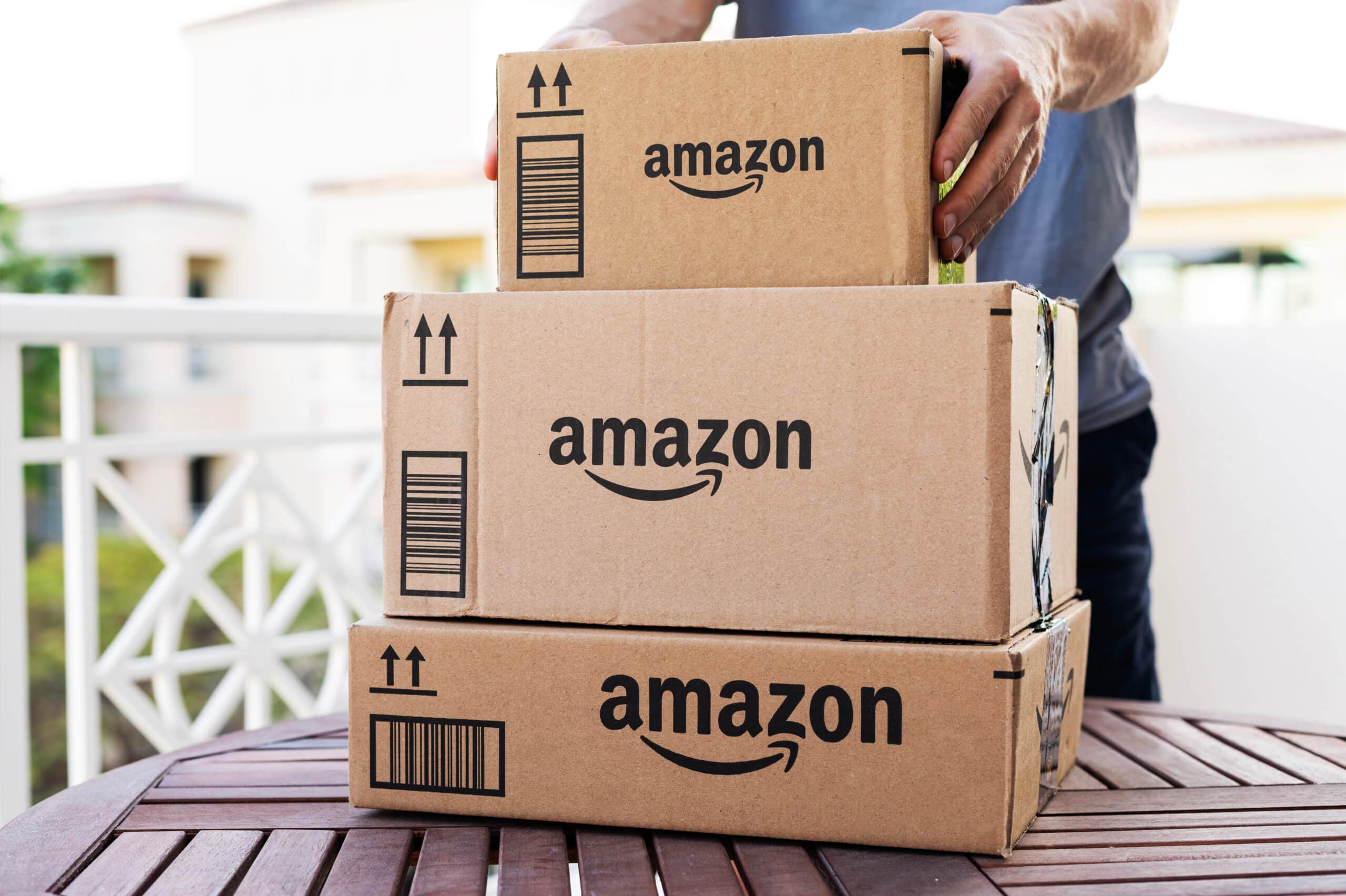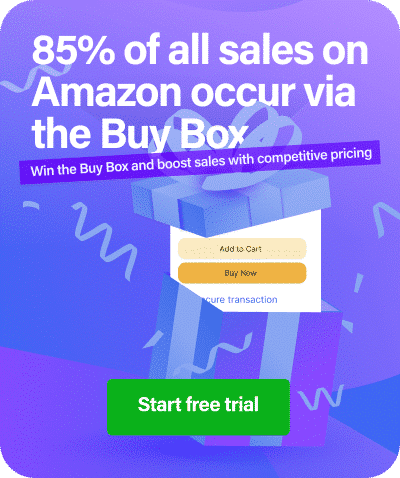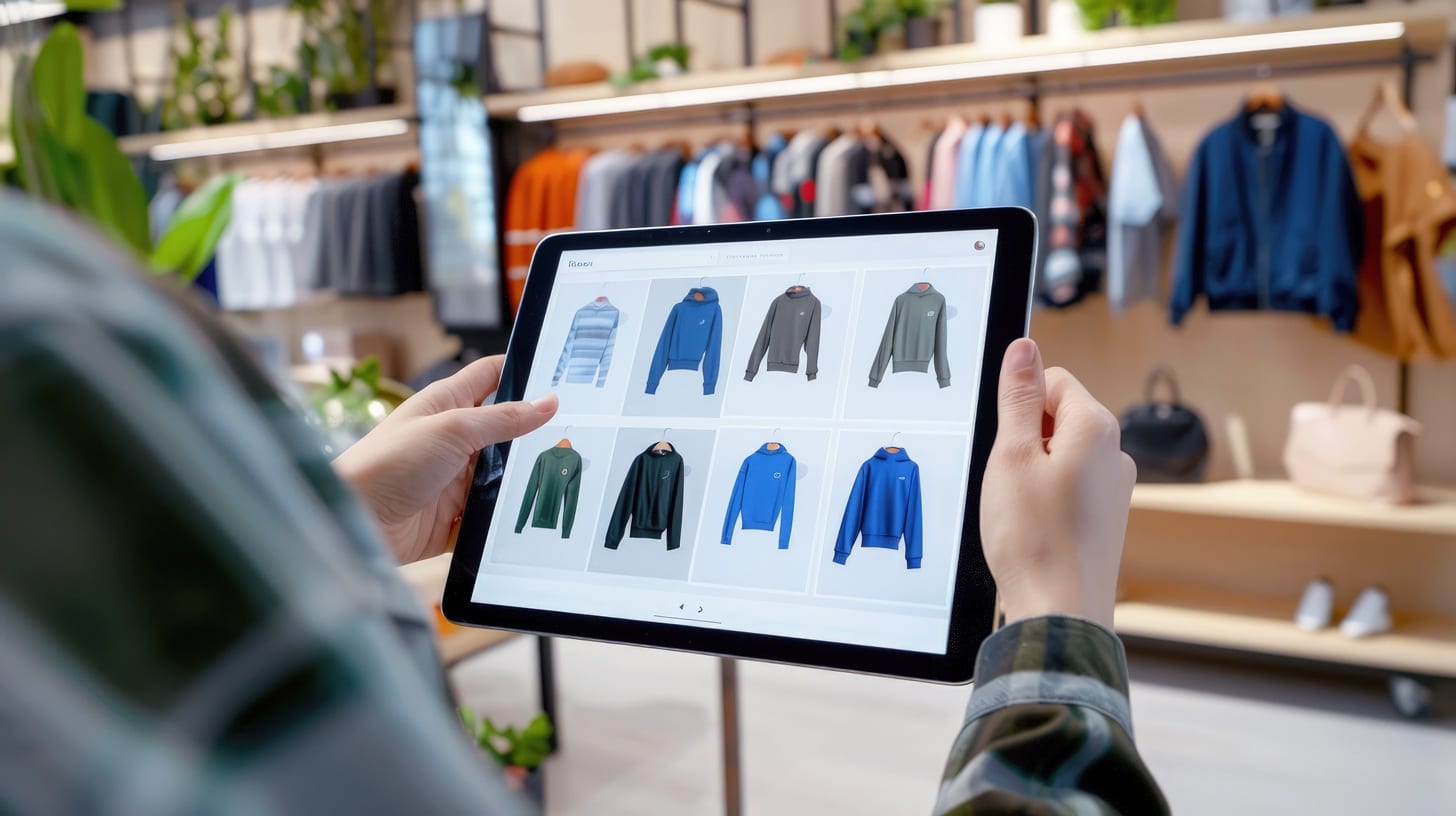Summary: The Amazon Buy Box drives over 80% of marketplace sales. This 2025 guide explains exactly what it is, how it works, and what it takes to win it. Discover the key factors Amazon uses to award the Buy Box and implement proven strategies to maximize visibility, conversions, and revenue on your listings.
Introduction
If you’re selling on Amazon, understanding the Buy Box isn’t optional—it’s essential to your success. The Amazon Buy Box is the white box on the right side of a product detail page where customers can begin the purchasing process by clicking “Add to Cart” or “Buy Now.” While it may seem like a simple feature, this small box is responsible for generating the vast majority of sales on the platform.
What is the Amazon Buy Box?
The Amazon Buy Box is the default purchasing option that appears prominently on product listings. When multiple sellers offer the same product, Amazon uses a sophisticated algorithm to determine which seller gets featured in this coveted position. The winning seller’s offer becomes the easiest path to purchase, capturing the attention of shoppers who typically don’t scroll down to compare other sellers.
Why the Buy Box Matters in 2025
The statistics tell a compelling story: over 80% of Amazon sales go through the Buy Box. For mobile shoppers—who now represent the majority of Amazon’s traffic—the Buy Box is even more critical, as alternative seller options are less visible on smaller screens. Winning the Buy Box means dramatically increased visibility, higher conversion rates, and ultimately, more revenue.
In 2025, Amazon has refined its Buy Box algorithm to prioritize customer experience more than ever. Mobile optimization, faster delivery promises, and seller reliability have become increasingly weighted factors. Understanding these changes is crucial for maintaining competitive positioning in today’s marketplace.
How the Amazon Buy Box Works
The Amazon Buy Box operates on a dynamic rotation system that evaluates eligible sellers in real-time. Unlike a static assignment, the Buy Box winner can change throughout the day based on pricing fluctuations, inventory levels, and seller performance metrics.
What Customers See vs. What Sellers Compete For
When a customer views a product listing, they see a single “Add to Cart” button featuring one seller’s offer. However, behind the scenes, multiple sellers may be competing for that position. Customers can click “Other Sellers on Amazon” to view alternative options, but research shows that fewer than 15% actually do so.
For sellers, the competition is invisible but constant. Amazon’s algorithm continuously evaluates all eligible offers and assigns the Buy Box to the seller who best meets its criteria at any given moment. This means you could win the Buy Box for several hours, lose it when a competitor adjusts their price, and win it back when you implement dynamic repricing strategies.
Mobile vs. Desktop Experience
The mobile shopping experience makes the Buy Box even more critical. On desktop computers, customers can easily scroll down to see “Other Sellers” listings. On mobile devices, however, this option is buried deeper in the interface, making the Buy Box winner capture an even higher percentage of sales—often exceeding 90%.
Amazon’s 2025 algorithm updates reflect this mobile-first reality, placing additional weight on factors that improve the mobile shopping experience, such as fast delivery options and high seller ratings.
Buy Box Selection Process
Amazon’s algorithm evaluates sellers based on multiple criteria simultaneously:
- Initial Eligibility Check: Amazon determines which sellers meet basic Buy Box requirements
- Performance Evaluation: Eligible sellers are scored on metrics like ODR, cancellation rate, and late shipment rate
- Price Comparison: Amazon compares total landed cost (item price + shipping) among top performers
- Fulfillment Assessment: FBA and Seller Fulfilled Prime offers receive preferential treatment
- Buy Box Assignment: The highest-scoring seller wins the Buy Box
- Continuous Monitoring: The process repeats constantly as conditions change
Key Factors That Influence Buy Box Eligibility
Amazon doesn’t publicly disclose the exact formula for Buy Box allocation, but years of seller data and testing have revealed the primary factors that influence eligibility and winning potential.
Price Competitiveness
Price remains one of the most significant Buy Box factors. Amazon evaluates your total landed cost—the item price plus shipping fees—and compares it to other sellers offering the same product. However, being the absolute lowest price doesn’t guarantee the Buy Box. Amazon seeks a balance between competitive pricing and seller reliability.
In 2025, Amazon has become more nuanced in its pricing evaluation. Rather than simply favoring the lowest price, the algorithm considers whether your price falls within a “competitive range” relative to other offers and the product’s historical pricing data. According to Amazon’s official seller guidelines, pricing significantly above market rates will disqualify you from Buy Box eligibility, even if all other factors are perfect.
Fulfillment Method
Your fulfillment method significantly impacts your Buy Box chances. Fulfillment by Amazon (FBA) sellers historically win the Buy Box 70-80% more often than Merchant Fulfilled (FBM) sellers, even when pricing is identical. This advantage stems from Amazon’s confidence in its own fulfillment network and the Prime eligibility that FBA provides.
Seller Fulfilled Prime (SFP) bridges this gap by allowing sellers to fulfill orders themselves while maintaining Prime eligibility. However, SFP requires strict performance standards and isn’t available to all sellers. For most merchants, FBA remains the most reliable path to consistent Buy Box ownership.
| Fulfillment Method | Average Buy Box Win Rate | Prime Eligibility | Main Advantage |
| FBA | 75-85% | Yes | Highest win rate, hands-off fulfillment |
| Seller Fulfilled Prime | 60-75% | Yes | Control inventory, Prime benefits |
| FBM with Fast Shipping | 30-50% | No | Lower costs, more control |
| Standard FBM | 10-25% | No | Most affordable option |
Seller Performance Metrics
Amazon closely monitors several key performance indicators that directly affect Buy Box eligibility:
Order Defect Rate (ODR): Must be below 1%. This metric includes negative feedback, A-to-Z Guarantee claims, and credit card chargebacks. Even a small spike above 1% can result in immediate Buy Box suspension.
Late Shipment Rate: Should stay below 4%. This measures the percentage of orders shipped after the expected ship date. For FBM sellers, this is critical—FBA sellers don’t need to worry about it since Amazon handles shipping.
Pre-Fulfillment Cancel Rate: Must remain under 2.5%. Canceling orders due to inventory issues signals unreliability to Amazon’s algorithm.
Valid Tracking Rate: Needs to exceed 95% for FBM sellers. Providing valid tracking information on nearly all orders demonstrates professionalism and helps Amazon track delivery performance.
Inventory Availability and Stock Levels
Consistent inventory availability signals reliability to Amazon’s algorithm. Frequent stockouts not only cause you to lose the Buy Box immediately but can also reduce your chances of winning it back quickly when you restock. Amazon prioritizes sellers who maintain steady inventory levels and have a history of avoiding stockouts.
In 2025, Amazon has increased the weight given to “time in stock” as a factor. Sellers who consistently keep products available year-round gain an advantage over those with sporadic availability, even if other metrics are similar.
Sales Volume and Velocity
While newer sellers can win the Buy Box, Amazon does factor in historical sales performance. Products with strong sales velocity—consistent order flow over time—signal to Amazon that customers trust this particular seller-product combination. This creates a positive feedback loop: winning the Buy Box drives more sales, which improves your chances of winning it again.
How to Win the Buy Box in 2025
Securing the Buy Box requires a strategic, multi-faceted approach. Here are the proven tactics that successful sellers use to maximize their Buy Box ownership.
Leverage FBA or Seller Fulfilled Prime
The single most impactful decision you can make is choosing the right fulfillment method. For most sellers, enrolling in FBA provides the clearest path to Buy Box dominance. Amazon’s own fulfillment network offers unmatched reliability, fast shipping times, and automatic Prime eligibility—all factors that heavily influence the Buy Box algorithm.
If you prefer maintaining control over your inventory and fulfillment process, Seller Fulfilled Prime offers a middle ground. However, SFP requires meeting Amazon’s stringent performance requirements, including same-day or next-day shipping capabilities and a 99% on-time delivery rate.
Implement Dynamic Repricing Tools
Static pricing is no longer sufficient in today’s competitive Amazon marketplace. The Buy Box can change hands multiple times per day as competitors adjust their prices. Manual repricing simply can’t keep pace with these fluctuations.
Automated repricing software monitors competitor prices in real-time and adjusts your prices according to rules you define. Modern repricing tools use algorithmic strategies that consider not just the lowest price, but also your profit margins, inventory levels, and Buy Box probability. This automation allows you to stay competitive 24/7 without constant manual monitoring.
The key is setting smart repricing rules that balance competitiveness with profitability. Rather than racing to the bottom, configure your repricer to stay within a competitive range while protecting your margins.
Maintain Exceptional Seller Performance
Your seller metrics are non-negotiable factors in Buy Box eligibility. Even with perfect pricing and FBA fulfillment, poor performance metrics will disqualify you from the Buy Box entirely.
Focus on these specific actions to maintain high performance scores:
Respond to customer messages within 24 hours: Quick, helpful responses improve customer satisfaction and reduce negative feedback.
Process orders immediately: For FBM sellers, ship orders promptly and provide tracking information as soon as possible.
Monitor your metrics dashboard daily: Check your Seller Central account health dashboard regularly to catch potential issues before they escalate.
Address negative feedback proactively: While you can’t remove legitimate negative feedback, you can request removal of feedback that violates Amazon’s guidelines or respond professionally to show future customers you care about satisfaction.
Maintain accurate inventory counts: Sync your inventory management system with Amazon to prevent overselling and forced cancellations.
Optimize Your Competitive Pricing Strategy
Winning the Buy Box doesn’t require being the absolute lowest price—it requires being within Amazon’s competitive range while maintaining strong performance metrics. Here’s how to find that sweet spot:
Research your competition regularly by checking the “Other Sellers” section on your listings. Identify the price range where most Buy Box-eligible sellers cluster their offers. Position your price in the lower third of this range while ensuring you maintain healthy profit margins.
Consider your total landed cost, not just your item price. If you’re using FBM, factor in your shipping costs when comparing against FBA sellers, who may have higher item prices but include free Prime shipping.
Test price elasticity on your products. Sometimes raising your price by 5-10% has minimal impact on Buy Box ownership but significantly improves your profitability. Use Amazon’s reporting tools to track your Buy Box percentage at different price points.
Build a Track Record of Reliability
For newer sellers, winning the Buy Box can be challenging initially. Amazon’s algorithm favors sellers with proven track records. You can accelerate this process by:
Starting with FBA: This immediately signals reliability through Amazon’s fulfillment network.
Focusing on perfect execution: Prioritize flawless order fulfillment over volume in your first few months.
Maintaining consistent inventory: Avoid stockouts by setting up automatic reorder points.
Pricing competitively but sustainably: Don’t sacrifice all profit margin to win early sales—build gradually while maintaining healthy metrics.
As you accumulate positive performance history and sales volume, Amazon’s algorithm will increasingly trust you with Buy Box ownership.
Buy Box for Used or Refurbished Products
The Buy Box works differently for used, refurbished, or collectible items compared to new products. Understanding these distinctions is crucial if you sell in these categories.
How Amazon Handles Non-New Condition Buy Boxes
For used and refurbished items, Amazon still awards a single Buy Box, but the algorithm weighs condition and condition notes more heavily. A seller offering a product in “Like New” condition will typically win the Buy Box over someone selling “Acceptable” condition, even if the latter has a lower price.
Amazon also considers the detail and honesty of condition descriptions. Sellers who provide thorough, accurate condition notes build trust with the algorithm and customers alike, improving their chances of winning the Buy Box for used items.
Eligibility Rules for Used and Refurbished Inventory
The basic eligibility requirements remain similar: competitive pricing, strong seller metrics, and reliable fulfillment. However, Amazon applies additional scrutiny to used and refurbished sellers due to the higher potential for customer dissatisfaction.
Your return rate becomes an even more critical factor for used items. A high return rate on used products signals to Amazon that your condition descriptions may be inaccurate or that the products don’t meet customer expectations, which can result in Buy Box suppression.
Tips for Winning the Buy Box with Used Products
Grade conservatively: Describe condition honestly or even slightly conservatively. Under-promising and over-delivering reduces returns and improves customer satisfaction.
Provide detailed condition notes: Explain any flaws, wear patterns, or missing accessories clearly. Transparency builds trust with both customers and Amazon’s algorithm.
Use high-quality product photos: If listing in used condition categories where custom photos are allowed, show the actual item’s condition clearly.
Price appropriately for condition: Research completed sales to understand what different condition grades command in the market. Don’t overprice “Good” condition items close to “Like New” prices.
Leverage FBA for used items: Many sellers overlook FBA for used inventory, but it provides the same fulfillment advantages and can give you a significant edge over FBM competitors in the used category.
Common Mistakes That Cost You the Buy Box
Even experienced sellers sometimes make costly errors that undermine their Buy Box performance. Avoiding these common pitfalls can dramatically improve your success rate.
Pricing Too High Without Prime Eligibility
One of the most frequent mistakes is pricing at or above FBA sellers while fulfilling merchant-fulfilled orders without Prime eligibility. Customers perceive significant value in Prime’s free, fast shipping, which means non-Prime offers need to be noticeably cheaper to compete effectively.
If you’re using FBM, your total landed cost (item price + shipping) should typically be 5-15% lower than comparable FBA offers to maintain Buy Box competitiveness. Simply matching FBA prices without offering Prime shipping puts you at a severe disadvantage.
Letting Inventory Go Out of Stock
Stockouts are Buy Box killers for multiple reasons. First, you obviously can’t win the Buy Box when you have no inventory to sell. Second, frequent stockouts signal unreliability to Amazon’s algorithm, making it harder to regain the Buy Box even after restocking.
The damage extends beyond the immediate stockout period. Amazon’s algorithm remembers your inventory consistency patterns. Sellers with frequent stockouts may find themselves with lower Buy Box percentages even when in stock, as Amazon hedges against the risk of you running out again.
Implement inventory management systems with automated reorder points to prevent stockouts. For FBA sellers, monitor your inventory levels closely and use Amazon’s automated replenishment recommendations.
Neglecting Customer Service Metrics
Some sellers focus exclusively on pricing and fulfillment while ignoring customer service fundamentals. This approach inevitably leads to declining metrics that erode Buy Box eligibility.
Late responses to customer messages, unresolved A-to-z claims, and accumulating negative feedback all damage your seller performance scores. Amazon’s algorithm treats customer service quality as a proxy for overall seller reliability—if you don’t take care of customers, Amazon won’t trust you with the Buy Box.
Set up email alerts for customer messages, check your Seller Central account daily, and respond to all inquiries within 12 hours whenever possible. Proactive customer service prevents small issues from escalating into performance-damaging claims and negative feedback.
Slow Shipping for FBM Sellers
Merchant-fulfilled sellers who don’t ship quickly enough face a double penalty: they accrue late shipment rate violations while also delivering poor customer experiences that generate negative feedback.
In 2025’s competitive environment, FBM sellers need to ship orders the same day or next day to remain competitive. Two-day or longer handling times put you at a significant disadvantage against FBA’s next-day and same-day delivery capabilities.
If you can’t consistently ship within 24 hours, strongly consider switching to FBA for your fast-moving products. The cost of FBA fees is often offset by the increased Buy Box ownership and sales velocity it enables.
Ignoring Buy Box Loss Patterns
Many sellers notice they’re losing the Buy Box but don’t investigate why. Amazon provides tools to diagnose Buy Box loss, yet many sellers fail to use them systematically.
When you lose the Buy Box, check whether it’s due to pricing (are you above the competitive range?), performance metrics (have any of your scores declined?), or inventory issues (are you showing low stock warnings?). Understanding the specific cause allows you to implement targeted solutions rather than guessing.
Monitoring Your Buy Box Performance
Consistent monitoring and analysis of your Buy Box performance enables you to identify issues quickly and optimize your strategy over time.
Tools for Tracking Buy Box Ownership
Amazon Seller Central: Your primary dashboard provides the Buy Box Percentage metric under Business Reports. This shows what percentage of page views occurred while you owned the Buy Box. Check this metric weekly at a minimum to spot trends.
Amazon Brand Analytics: Brand-registered sellers gain access to enhanced analytics, including more detailed Buy Box metrics and competitive intelligence about who else is competing for the Buy Box on your listings.
Third-Party Analytics Tools: Professional Amazon seller software provides real-time Buy Box monitoring, alerting you immediately when you lose the Buy Box and often identifying the reason. These tools can track Buy Box ownership minute-by-minute, providing insights that Amazon’s daily reports can’t match.
Repricing software often includes Buy Box monitoring as part of its feature set, combining price optimization with performance tracking in a single platform.
Key Metrics to Monitor
Buy Box Percentage: The percentage of page views where you owned the Buy Box. Aim for 80%+ on products where you’re the primary seller. Lower percentages indicate competitive pricing or performance issues.
Lost Buy Box Reports: Track when you lose the Buy Box and to whom. If you’re consistently losing to the same competitor, analyze their pricing strategy, fulfillment method, and seller metrics to identify your competitive gap.
Competitor Price Positions: Monitor where your prices fall relative to other sellers. Being in the top 25% of lowest prices among eligible sellers typically maximizes Buy Box ownership.
Order Defect Rate Trends: Watch for any upward trend in ODR, even if you’re still below the 1% threshold. Early detection allows you to address issues before they become critical.
Inventory Performance Index (IPI): While not directly tied to the Buy Box, your IPI score affects your storage limits and restocking ability, which indirectly impacts Buy Box ownership through inventory availability.
How to Troubleshoot and Recover Quickly
When you notice declining Buy Box performance, follow this diagnostic process:
Step 1 – Check Account Health: Review your Account Health Dashboard in Seller Central. Look for any performance notifications or metrics approaching thresholds.
Step 2 – Analyze Pricing: Compare your landed cost against current Buy Box winners. If you’re more than 10% above the winner’s price, adjust accordingly.
Step 3 – Review Fulfillment Method: If you’re using FBM and losing to FBA sellers consistently, calculate whether switching to FBA would be profitable despite the additional fees.
Step 4 – Examine Inventory Levels: Check if low inventory warnings are displaying on your listings. Even if you’re not out of stock, low inventory alerts can reduce Buy Box eligibility.
Step 5 – Evaluate Recent Changes: Did you recently modify your shipping settings, adjust prices significantly, or experience a spike in returns? Recent changes often correlate with Buy Box shifts.
Step 6 – Test Price Adjustments: If pricing appears to be the issue, make small incremental adjustments (2-3% at a time) and monitor Buy Box recovery rather than making dramatic price cuts.
For issues related to performance metrics, the recovery process takes longer since you need to improve your underlying metrics through excellent execution over time. Focus on perfect fulfillment on all new orders while the algorithm gradually recognizes your improved performance.
Advanced Strategies for Brand Owners
If you’re a brand owner selling your own products on Amazon, you have additional tools and strategies available to maximize Buy Box control.
How Brand Registry Affects Buy Box Control
Amazon Brand Registry provides enhanced content capabilities, trademark protection, and increased control over your product listings. While Brand Registry doesn’t directly guarantee Buy Box ownership, it provides several indirect advantages.
First, brand-registered sellers can use Amazon’s Transparency program and other anti-counterfeiting tools to reduce unauthorized sellers on their listings. Fewer competitors means easier Buy Box ownership.
Second, Brand Registry unlocks A+ Content and Brand Stores, which improve conversion rates. Higher conversion rates signal product quality to Amazon’s algorithm, potentially influencing Buy Box allocation over time.
Third, Brand Registry sellers can report violations more effectively and get faster resolution on listing hijacking issues, helping maintain control over product detail pages.
Competing with Resellers on Your Own Listings
For brand owners, nothing is more frustrating than losing the Buy Box to unauthorized resellers on your own products. While you can’t simply remove legitimate resellers who’ve acquired your products through authorized channels, you can stack the deck in your favor.
Optimize every Buy Box factor: As the manufacturer, you should have the best margins and the ability to price most competitively. Ensure you’re using FBA, maintaining perfect metrics, and pricing aggressively enough to maintain consistent Buy Box ownership.
Leverage MAP policies: Implement and enforce Minimum Advertised Price policies for your wholesale and retail partners. This prevents resellers from undercutting you on price alone.
Use the Automated Pricing tool: Amazon’s Automated Pricing for brand owners can help you respond instantly to competitive pressure while protecting your margins.
Enroll in Amazon Vine: Accumulating numerous high-quality reviews through Amazon’s Vine program builds product credibility, which indirectly supports your Buy Box position by improving conversion rates.
Authorized Reseller Enforcement
If you have unauthorized sellers violating your distribution agreements or selling counterfeit versions of your products, Brand Registry provides enforcement mechanisms.
Document your distribution chain carefully and maintain records of authorized resellers. When you identify unauthorized sellers, you can report them through Brand Registry’s Report a Violation tool. Amazon takes these reports seriously when backed by proper documentation.
For authorized resellers, consider implementing a Minimum Advertised Price (MAP) policy and using software to monitor compliance. While you can’t control reseller pricing directly, you can enforce MAP violations by suspending wholesale privileges for repeat violators.
Some brand owners find success with the Amazon Seller Fulfilled Prime (SFP) program or Amazon’s Small and Light program, which offer fulfillment advantages that resellers may not be able to access, giving you a competitive edge.
Conclusion + Action Steps
The Amazon Buy Box represents the single most important competitive factor for marketplace success in 2025. With over 80% of sales flowing through this feature, mastering Buy Box optimization isn’t optional—it’s essential for sustainable profitability on the platform.
Key Takeaways
The Buy Box algorithm evaluates sellers based on a combination of price competitiveness, fulfillment method, seller performance metrics, inventory availability, and historical reliability. No single factor guarantees Buy Box ownership; instead, success requires excellence across all dimensions.
FBA remains the most reliable path to consistent Buy Box ownership for most sellers, though Seller Fulfilled Prime and well-executed FBM strategies can also succeed with proper execution. Price matters significantly, but being the absolute lowest price isn’t required—staying within the competitive range while maintaining strong metrics often outperforms rock-bottom pricing with mediocre performance.
The mobile-first algorithm updates in 2025 have made Buy Box ownership even more valuable, as mobile shoppers rarely explore alternative sellers. This trend will likely continue, making Buy Box optimization an increasingly critical component of Amazon success.
7-Step Buy Box Optimization Checklist
Ready to improve your Buy Box performance this quarter? Follow this actionable checklist:
- Audit your fulfillment method: If you’re using FBM and struggling with Buy Box ownership, calculate the ROI of switching to FBA for your top-selling products. The increased Buy Box percentage often justifies the additional fees.
- Implement automated repricing: Set up algorithmic repricing with rules that keep you competitive while protecting margins. Monitor your Buy Box percentage before and after implementation to measure impact.
- Review your Account Health daily: Make checking your Seller Central Account Health Dashboard part of your morning routine. Early detection of metric declines allows for quick corrective action.
- Optimize your inventory management: Set up automatic reorder points that trigger when inventory falls below 30 days of sales. Preventing stockouts is easier than recovering from them.
- Analyze your pricing position: Compare your landed cost against current Buy Box winners weekly. Ensure you’re within 10% of the winning price if you have comparable metrics and fulfillment.
- Improve your fulfillment speed: If you’re FBM, reduce your handling time to same-day or next-day shipping. Speed increasingly matters in Amazon’s algorithm.
- Monitor and respond to customer communications quickly: Set up email alerts for customer messages and respond within 12 hours maximum. Fast, helpful responses prevent negative feedback and maintain strong metrics.
Take Action Today
Buy Box optimization is not a one-time project but an ongoing process of monitoring, testing, and refinement. The competitive landscape on Amazon constantly evolves, and staying ahead requires consistent attention to your metrics, pricing, and performance.
Start by implementing the highest-impact items from the checklist above—for most sellers, that means evaluating FBA enrollment and implementing automated repricing. These two changes alone can dramatically improve Buy Box ownership within weeks.
For advanced sellers and brand owners, the strategies become more nuanced, involving MAP enforcement, authorized seller management, and leveraging Brand Registry tools. Regardless of your experience level, the fundamentals remain constant: competitive pricing, reliable fulfillment, excellent customer service, and consistent availability.
The sellers who win the Buy Box most consistently in 2025 are those who treat it as a holistic business process rather than a single tactic. By optimizing across all the factors Amazon evaluates and maintaining vigilant monitoring of your performance, you position yourself for maximum visibility, conversion, and profitability on the platform.
FAQs
Can multiple sellers share the Buy Box?
Yes, though not simultaneously. Amazon’s Buy Box operates on a rotation system where eligible sellers can win it at different times throughout the day. The algorithm continuously evaluates all eligible offers and may switch Buy Box ownership as conditions change, such as when sellers adjust prices or inventory levels shift. However, only one seller appears in the Buy Box at any given moment—customers see only that single “Add to Cart” option.
Does Amazon favor FBA sellers in 2025?
Amazon does give preference to FBA sellers, though not exclusively. FBA offers win the Buy Box approximately 75-85% of the time compared to 30-50% for merchant-fulfilled sellers with comparable pricing and metrics. This advantage exists because FBA guarantees faster shipping, Prime eligibility, and Amazon’s trusted fulfillment standards. However, FBM sellers can still win the Buy Box consistently by maintaining exceptional performance metrics, competitive pricing including shipping costs, and fast fulfillment speeds. Seller Fulfilled Prime bridges this gap by offering Prime benefits without using FBA.
What’s the best way to lower my price without hurting margins?
Rather than making blanket price reductions, implement strategic repricing that adjusts based on competitive conditions and your profit thresholds. Use repricing software to set minimum acceptable margins and let the algorithm find the highest profitable price that maintains Buy Box competitiveness. Additionally, optimize your supply chain and fulfillment costs to improve margins at any price point—negotiating better terms with suppliers, streamlining packaging, and reducing shipping costs all allow for more competitive pricing without sacrificing profitability. Consider using FBA, which, despite its fees, often enables higher overall prices due to Prime eligibility while still winning the Buy Box more consistently.
How often is the Buy Box updated?
Amazon’s Buy Box algorithm runs continuously, evaluating eligible sellers and potentially reassigning Buy Box ownership every few minutes. Price changes, inventory updates, and competitor adjustments can trigger immediate Buy Box recalculations. This means you could win the Buy Box, lose it an hour later when a competitor lowers their price, and win it back when your automated repricer adjusts accordingly. For sellers, this means Buy Box monitoring needs to happen in real-time rather than daily or weekly. Most professional sellers use automated tools that alert them to Buy Box changes within minutes so they can respond quickly.
Can I win the Buy Box as a new seller?
Yes, new sellers can win the Buy Box, though it’s more challenging initially. Amazon’s algorithm does factor in seller history and sales velocity, giving established sellers an advantage. However, new sellers can overcome this by excelling in the controllable factors: using FBA for immediate fulfillment credibility, pricing competitively within the market range, maintaining perfect performance metrics from day one, and ensuring consistent inventory availability. Start with products that have less intense competition to build your track record, then expand to more competitive categories as you accumulate positive performance history. Most new FBA sellers with competitive pricing and good metrics begin winning the Buy Box within their first 30-60 days of selling.





